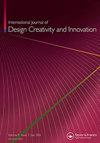Topological perception on attention to product shape
IF 2.5
Q4 ENGINEERING, MANUFACTURING
International Journal of Design Creativity and Innovation
Pub Date : 2020-04-02
DOI:10.1080/21650349.2019.1633960
引用次数: 3
Abstract
ABSTRACT A primitive and general function of the visual system is the perception of global topological properties. In fact, people prioritize attention to these properties over the local geometric properties of an object. In this study, we aimed to verify whether the perception of topological properties is applicable to product recognition. If a topological transformation occurs in the shape of a product, the product may receive more attention from customers and improved publicizing of the product’s innovative and nonvisual characteristics, such as function and experience, can be inferred. Therefore, topological properties may contribute to product innovation. We hypothesized that perceiving topological properties (e.g. holes, connectivity, and inside/outside relationships) occurs in product shapes, and human attention to products varies according to topological transformations in these shapes. Experimental results on bicycle recognition suggest that human attention varies according to topological transformations. A repertory grid was used to discover and discriminate the reasons for such variations. We extracted the mental constructs of the participants regarding the products with different topological transformations and identified the main reasons for visual attention. People pay more visual attention to the shapes of products with clear topological variations.产品形状注意的拓扑感知
视觉系统的一个基本而普遍的功能是感知全局拓扑性质。事实上,人们优先关注这些特性,而不是对象的局部几何特性。在这项研究中,我们旨在验证拓扑性质的感知是否适用于产品识别。如果产品的形状发生拓扑变换,则产品可能会受到客户的更多关注,并可以推断出产品的创新和非视觉特征(如功能和体验)的宣传力度有所提高。因此,拓扑特性可能有助于产品创新。我们假设感知拓扑特性(例如,孔、连通性和内部/外部关系)发生在产品形状中,人类对产品的注意力根据这些形状中的拓扑变换而变化。自行车识别的实验结果表明,人类的注意力随着拓扑变换而变化。使用剧目网格来发现和区分这种变化的原因。我们提取了参与者关于具有不同拓扑变换的产品的心理结构,并确定了视觉注意力的主要原因。人们更多地关注具有明显拓扑变化的产品的形状。
本文章由计算机程序翻译,如有差异,请以英文原文为准。
求助全文
约1分钟内获得全文
求助全文
来源期刊

International Journal of Design Creativity and Innovation
ENGINEERING, MANUFACTURING-
CiteScore
3.80
自引率
27.80%
发文量
15
期刊介绍:
The International Journal of Design Creativity and Innovation is an international publication that provides a forum for discussing the nature and potential of creativity and innovation in design from both theoretical and practical perspectives. Design creativity and innovation is truly an interdisciplinary academic research field that will interest and stimulate researchers of engineering design, industrial design, architecture, art, and similar areas. The journal aims to not only promote existing research disciplines but also pioneer a new one that lies in the intermediate area between the domains of systems engineering, information technology, computer science, social science, artificial intelligence, cognitive science, psychology, philosophy, linguistics, and related fields. The journal covers, but is not restricted to, the following topics: ·Theories on Design Creativity and Innovation ·Cognition of Design Creativity ·Innovative Process ·Inventive Process ·Analogical Reasoning for Design Creativity and Innovation ·Design Synthesis ·Method and Tools for Design Creativity and Innovation ·Representation of Design Creativity and Innovation ·Education for Design Creativity and Innovation ·Concept Generation and Inspiration.
 求助内容:
求助内容: 应助结果提醒方式:
应助结果提醒方式:


